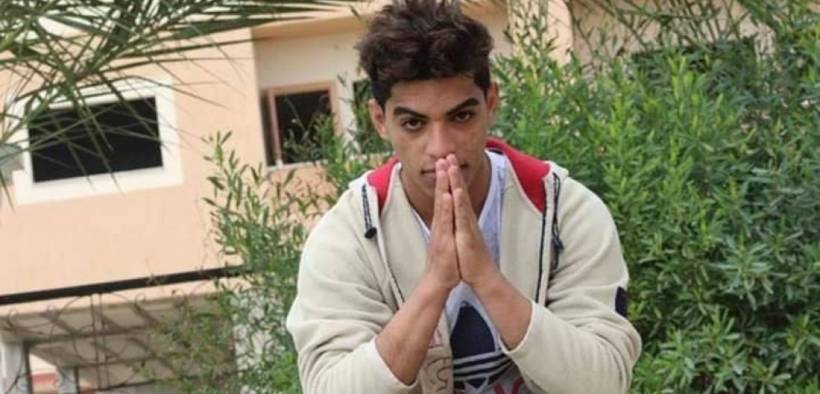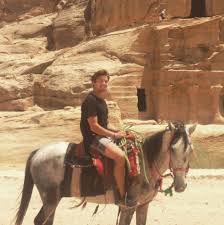Palestinian Teen Arrested By Israel And Returned Home In A Body Bag

“We saw him on the ground and told him to crawl. But then a military vehicle raced up and a soldier fired at him, shooting him in the right leg. Soon a helicopter came and took him away.”
The body of a 17-year old Palestinian boy was returned to his family in Gaza on October 23, 355 days after he was shot in the leg by an Israeli soldier and transported by helicopter to a hospital. A new report from Middle East Eye details how the family of the slain teenager, Emad Khalil Ibrahim Shahin, as well as several Israeli and Palestinian NGOs are searching for answers about how he was killed, why his body was held for so long, and why the Israeli military won’t share his medical records.
“I don’t understand what Israel did with a body of Palestinian teenager for a year,” Ran Yaron of Tel Aviv-based NGO Physicians for Human Rights told Middle East Eye.
Shahin was the youngest of nine children and a ‘passionate participant’ in the Great March of Return protest movement, which has been held every Friday since March 2018. The protest movement seeks to end the 12-year long blockade on Gaza and allow Gazans to return to their ancestral villages in Israel.
The Israeli military’s response to the protests has been broadly condemned as severely disproportionate to the threat posed by protestors, characterized by an open-fire policy supported by the government and judicial system. According to the UN Human Rights Council, 183 Palestinians were killed from the beginning of the protest to February 2019 and 6,106 were injured from sniper ammunition, inflicting many life-changing wounds.
The teenager was shot in the foot by Israeli snipers on three separate occasions at the weekly protests for repeatedly approaching the barrier and burning tires to obscure the vision of snipers aiming at protestors. The third bullet wound forced the amputation of three of his toes.
“Our mother tried to stop him from going back. The entire family told him he had done his duty for his country and should rest now,” Shahin’s sister Monira told Middle East Eye. “But he said he did not fear death, that death is inevitable, and he would rather die for his country, resisting occupation, than in some other way that is pointless.”
On November 3, 2018, Shahin and some of his friends snuck into an abandoned barracks about 300 meters within the fence and lit a fire, before they became afraid Israeli soldiers had noticed them and fled.
“We ran until we found a sand dune to hide behind on the other side of the fence, but then noticed Emad was not with us. He ran slower because he was on crutches,” one of Shahin’s friends, who asked to remain anonymous, told Middle East Eye. “We saw him on the ground and told him to crawl. But then a military vehicle raced up and a soldier fired at him, shooting him in the right leg. Soon a helicopter came and took him away.”
Eyewitnesses then saw Israeli soldiers take Shahin away in a helicopter, presumably to the Soroka medical center in the Negev. His family immediately contacted numerous NGOs as well as the Israeli authorities, who at first said the teenager had only “moderate” wounds, but by the next day, Physicians for Human Rights was told that he was dead.
The NGO has since failed to obtain Shahin’s medical records after multiple requests to Israeli authorities. Middle East Eye reports that the military referred it to the defense ministry, before the defense ministry referred it back to the military.
Almost a year after he was shot, the International Red Cross informed Shahin’s family that his body had arrived at Al-Shifa hospital in Gaza City, where the receiving physician found that his body “had been stored in liquid nitrogen at an extremely cold temperature for a long time.”
The family did not perform an autopsy for religious reasons, but found distressing marks in an external examination:
“From the middle of his chest to his stomach ran a 15-centimeter scar, indicating stitching. The same pattern could be seen radiating out for 13 centimeters from the left side of his chest on both sides,” wrote Middle East Eye’s Tareq Hajjaj. “The mysterious incisions raised the suspicions of Shahin’s family that his organs had been taken for trafficking, a notorious practice that Israel has attempted to stamp out since 2008.”
Dr. Emad Shihada, the receiving physician, told Middle East Eye that the marks could have been from efforts by physicians to stop internal bleeding, and that Shahin could have been killed by the three shots in his right leg if one of the bullets had ruptured his femoral artery.
According to the Al-Mezan Centre for Human Rights, Israel is holding the bodies of 15 Palestinians from the Gaza Strip who have been killed since the Great March of Return protest began in March last year, including two children.
“Last week, Defence Minister Naftali Bennett ordered all bodies of Palestinians held by Israel to be kept from their families as a ‘deterrent against terrorism,'” wrote Hajjaj. “Israel is the only country in the world implementing a policy of confiscating remains, using legislation dating back to 1945 during the British Mandate.”
















The human being has always been, and still is, the cheapest of all commodities. But the cheapness is a grayscale distribution. In today’s world, no human being is a cheaper commodity than a Palestinian, thanks to the self-proclaimed “God’s chosen people” who operate the criminal zionist colony in Palestine, while the world turns a blind eye to their hideous crimes against humanity and innumerable gross violations of international law, the Geneva Conventions, and UN resolutions (most of which are vetoed by the zionists’ #1 partner in crime and chief subsidizer, the USA).